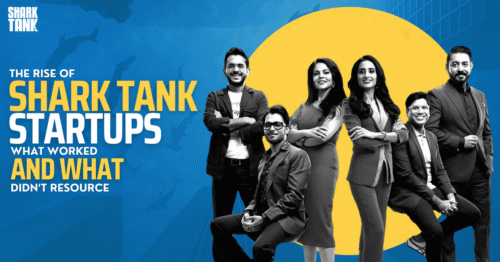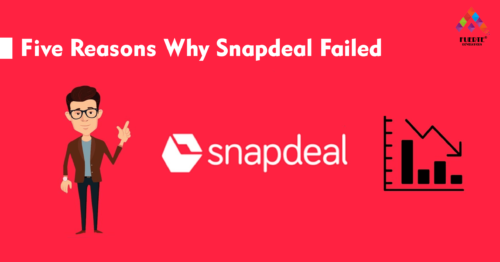Introduction
In a world dominated by global FMCG giants like Unilever, Nestlé, and P&G, the rise of Patanjali Ayurved stands out as nothing short of revolutionary. From Ayurvedic toothpaste and herbal shampoos to ghee and cow-based products, Patanjali has disrupted India’s consumer market by blending cultural heritage with aggressive marketing and nationalist appeal.
What made Patanjali succeed where many others failed? How did it evolve from a yoga movement into a multi-billion-rupee wellness empire? The answer lies in one powerful strategy:
Cultural Branding.
Let’s dive into how Patanjali used India’s roots, beliefs, and consumer emotions to build not just a brand — but a movement.
Chapter 1: The Genesis of Patanjali
Founded in 2006 by Acharya Balkrishna and Baba Ramdev, Patanjali was never an ordinary startup. Its foundation was deeply linked with yoga, Ayurveda, and Bharatiya Sanskriti — making it feel more like a social mission than a commercial venture.
Ramdev’s Mass Appeal
Before Patanjali’s FMCG journey even began, Baba Ramdev was already a household name. With yoga shows on TV every morning, he built a connection with Indian families across rural and urban India. This emotional and spiritual equity laid the groundwork for brand trust.
Chapter 2: Cultural Branding – The Patanjali Way
Most brands talk about ingredients, features, or price. Patanjali talks about values. That’s the real difference.
1. Rooted in “Swadeshi”
Patanjali positioned itself as the swadeshi alternative to foreign multinationals. Its messaging was loud and clear:
“Don’t buy foreign products. Support Indian brands that respect Indian values.”
This clicked massively with consumers who were tired of “Western” consumerism and wanted to support local, culturally aligned businesses.
2. Ayurveda Meets Modern Retail
Patanjali made Ayurveda cool again. Instead of relegating it to dusty stores or baba shops, it brought Ayurvedic products into supermarkets, malls, and Big Bazaar shelves — often placed next to Dove or Colgate.
Now, Ayurveda wasn’t just grandma’s remedy — it was the new normal.
3. Cultural Relevance in Product Design
Products were not just “natural” or “herbal” — they were culturally familiar. A few examples:
- Dant Kanti (Toothpaste) → Traditional alternative to Colgate
- Kesh Kanti (Hair Care) → Herbal haircare that feels rooted in Indian remedies
- Divya Chyawanprash → From mythology to medicine in a jar
Every product was named to evoke Indianness, not just functionality.
Chapter 3: Disruptive Pricing and Distribution
You’d think a brand playing the Ayurvedic card would be premium. But Patanjali flipped that script.
Its products were 30-40% cheaper than their multinational counterparts.
- Ghee? Cheaper and claimed to be purer.
- Shampoo? Half the price.
- Toothpaste? Natural and cost-effective.
By combining cultural identity with affordability, Patanjali became accessible to the masses.
Smart Distribution Moves:
- Started with exclusive Patanjali stores → created loyalty and awareness
- Expanded rapidly to Kirana stores, medical shops, e-commerce, and big-box retail
- Made inroads into rural India where multinationals often struggled
Chapter 4: Marketing That Speaks the People’s Language
1. Baba Ramdev as the Brand
He wasn’t just a spokesperson — he was the brand. His trust, simplicity, and spiritual authority made ads more believable than celebrities. His message?
“I’m not here to earn profit — I’m here to serve Bharat.”
2. Emotion Over Aesthetics
While other brands focused on high-budget glamour, Patanjali’s ads were raw, direct, and emotionally resonant. The tone was:
- Anti-foreign
- Pro-nature
- Pro-India
- Simple language, mass reach
3. Nationalist Sentiment = Sales
Patanjali understood that in India, emotions sell. Their campaigns often coincided with rising public sentiment around:
- Vocal for Local
- Boycotting Chinese goods
- Reviving ancient Indian wisdom
Suddenly, buying Patanjali was not just a choice — it was a patriotic act.
Chapter 5: Scaling the Empire
By 2016, Patanjali had achieved ₹5,000 crore+ in revenue — faster than any other FMCG company in Indian history.
They entered:
- Food (atta, biscuits, honey)
- Beverages (aloe vera juice, cow milk)
- Personal Care (soaps, creams)
- Health (Chyawanprash, tablets, supplements)
- Apparel (Patanjali Paridhan)
From Ayurveda to fashion, the brand expanded across industries — powered by the same cultural narrative.
Read this : How Predictive Analytics is Empowering Marketers to Anticipate Customer Needs
Chapter 6: Challenges and Criticism
No brand journey is perfect. Patanjali has faced its share of hiccups:
Quality Concerns
Some reports flagged product testing issues and inconsistencies. The brand had to double down on labs, research, and standardization.
Over-expansion
Entering too many categories too fast (like jeans, noodles, bottled water) diluted focus.
Competition & Brand Fatigue
Other Indian brands began using the same “natural” and “swadeshi” positioning, blurring Patanjali’s uniqueness.
Despite these, Patanjali retains strong recall and trust — especially in Tier 2 and Tier 3 cities.
Chapter 7: Digital & E-Commerce Strategy
Although late to digital, Patanjali has started catching up:
- Launched its own e-commerce platform
- Active presence on YouTube with yoga videos, product explainer content
- Leveraging influencers in the health and wellness space
- Running campaigns around Digital Bharat, Ayurveda for Gen Z, etc.
The move to modernize while keeping its cultural core intact is smart — and timely.
Final Thoughts
Patanjali’s story is a masterclass in cultural branding done right.
It showed India — and the world — that:
- Ancient doesn’t mean outdated.
- Ayurveda can be mainstream.
- Patriotism can be a brand value.
- And spirituality can sell soap.
In an age where branding often feels artificial, Patanjali feels authentic — and that’s why it works.
As global markets look for more rooted, local-first branding strategies, the Patanjali playbook will serve as an iconic case study for decades to come.
About Fuerte Developers
At Fuerte Developers, we don’t just build websites or run campaigns. We tell stories. We help brands connect with culture, audience emotion, and powerful digital strategies — just like Patanjali did.
Whether you’re a startup or an enterprise, we’ll help you:
- Craft your identity
- Reach your audience across platforms
- And scale with substance
📞 Let’s build your digital empire — culturally and creatively.
📩 Contact us now for a free consultation.







